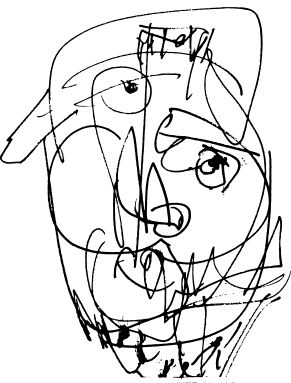The Evolution of Product Design in the Age of AI
The role of the Product Designer has always been dynamic, evolving alongside technological advancements and shifting business needs. From the early days of visual design to the user-centered approach of UX, and the holistic methodology of product design, our profession has continuously transformed. Today, we stand at another pivotal moment in this evolution: the emergence of the Product Design Orchestrator.
As a design leader who has navigated the complexities of enterprise UX at organizations like Amazon, AWS, and now Entanglement, I’ve witnessed firsthand how AI is not just changing our tools, but fundamentally reshaping our profession. This transformation isn’t about replacement, but rather about elevation—shifting designers from pixel-perfectionists to strategic orchestrators of increasingly powerful design systems and AI collaborators.
Much like the UX discipline itself, this evolution involves considerable trial and error. The tools we’re excited about today may be obsolete in weeks, and our approaches must remain flexible. As a designer and leader, I’m constantly experimenting, adjusting, and monitoring what works and what doesn’t. This mindset of perpetual learning and adaptation is essential for navigating this rapidly changing landscape.
What is a Product Design Orchestrator?
A Product Design Orchestrator:
- Directs a symphony of AI tools and systems rather than executing every note themselves
- Focuses on strategy, principles, and outcomes rather than individual deliverables
- Orchestrates collaboration between human creativity and AI capabilities
- Emphasizes systems thinking over pixel-perfect execution
- Bridges the gap between technical complexity and human needs
This evolution aligns perfectly with my leadership philosophy of “Systems Over Pixels”—prioritizing scalability, repeatability, and long-term UX sustainability over one-off design fixes. In the AI era, this systems approach becomes even more critical.
The Evolving User: Keeping Humans at the Center of AI Orchestration
As we embrace these powerful new AI tools, there’s a paradoxical truth we must acknowledge: the more technology advances, the more critical human connection becomes. The Product Design Orchestrator’s most important responsibility isn’t mastering AI tools—it’s ensuring that the evolving needs of real humans remain at the center of everything we create.
Creating Space for Deeper Human Connection
When AI handles routine tasks, a tremendous opportunity emerges: designers can dedicate more time to meaningful human interaction. Instead of being consumed by pixel-pushing and specification documents, we can:
- Conduct more in-depth user research with diverse populations
- Spend additional time in the field observing actual usage contexts
- Facilitate more collaborative design sessions with users as co-creators
- Build stronger relationships with stakeholders through more frequent and more informed touchpoints
- Develop deeper empathy for the people using our products
This isn’t just a nice-to-have—it’s essential as technology becomes more pervasive in everyday life. As AI-powered experiences become more sophisticated and integrated into critical aspects of users’ lives, our understanding of human needs, concerns, and contexts must evolve in parallel.
Feedback Loops: The Heart of Human-Centered AI Design
Automation without robust feedback loops doesn’t evolve our discipline—it devolves it. The Product Design Orchestrator must establish multiple channels for human feedback at every stage:
- Continuous Discovery: Replace point-in-time research with ongoing conversations
- Participatory Design: Involve users in co-creating with AI tools rather than just testing outcomes
- Ethical Checkpoints: Regular assessment of how AI-augmented design decisions impact diverse users
- Impact Measurement: Look beyond usability to measure meaningful human outcomes
- Team Reflection: Create space for design teams to discuss the human implications of AI-assisted work
These feedback loops ensure that efficiency gains from AI don’t come at the expense of human connection but rather enhance our ability to serve human needs more effectively.
Evolving With Our Users
As technology transforms user expectations and behaviors, the Product Design Orchestrator must evolve in tandem. This means:
- Recognizing how AI is changing user mental models and expectations
- Understanding the varying comfort levels with AI across different user populations
- Addressing emerging ethical concerns around automation, agency, and trust
- Designing for transparency in AI-augmented experiences
- Creating appropriate control mechanisms that empower rather than overwhelm
By dedicating our expanded capacity to deeper human connection, we can ensure that technology serves human needs rather than the reverse.
